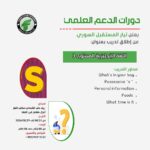Is northern Syria a free zone or an isolated economy?

Introduction:
In recent years, Syria has faced significant economic challenges due to internal conflict and foreign intervention. The war in Ukraine further highlighted economic disparities between Syria and other countries, as well as between different Syrian regions. Syria suffers from a general budget deficit or complete lack of one, especially in northern Syria. The consumer price index in Syria (according to the Paasche index of 2021) increased sixfold, with food prices rising 6.7 times during the period from 2019 to the first half of 2022. The general price index recorded annual inflation (Y-O-Y) of 113.5% and 110.9% for the years 2020 and 2021, respectively, and semi-annual inflation of 55.71% for the first half of 2022.
All this coincided with a food crisis, leading to a 100% increase in basic food prices since January 2023, tripling compared to the previous year, reaching 938,000 Syrian pounds (equivalent to 81 US dollars). This contributed to the shortage of these resources, exacerbating economic instability in addition to the ongoing political instability in Syria.
One positive aspect, however, is that northern Syria is not on the list of heavily indebted regions, unlike Lebanon or Egypt, or the regime-controlled areas of Syria. There, funds allocated to the public debt fund in Syrian budgets have seen a substantial increase, surpassing 2300%. The public debt fund allocations in the 2024 budget proposal remain unknown. The de facto authorities in northern Syria have relied on harmful programs based on economic randomness, focusing on prolonging their stay in power while deferring long-term solutions, replacing them with short-term fixes, often citing the war and its circumstances as justification. We have outlined this in several studies and articles available on our website, particularly in the study titled “Economic Decline in Areas Outside Regime Control (Causes and Solutions)” and “Weak Economic Infrastructure in Northern Syria (Reality and Solutions).”
In this paper, we provide an analysis of the economic reality in northern Syria, assessing whether it is an economically isolated region or an open market, to provide a clearer picture for decision-makers and those interested in the topic.
Isolated Region:
The economic isolation of northern Syria is reflected in the main challenges facing its economy, which include:
- The economic blockade imposed on the region, which is one of the biggest challenges, limiting trade and the flow of goods, and hindering the arrival of aid.
- The lack of security stability significantly impacts the investment climate, making it difficult to attract investments.
- The heavy reliance on humanitarian aid makes the economy fragile and unsustainable.
- The lack of infrastructure leads to higher production and transportation costs.
- The repercussions of war, which destroyed infrastructure and production sectors, have negatively affected the economy.
- Lifting the Economic Blockade:
- Through exerting pressure on international and regional parties to lift the economic blockade on the region, facilitating trade and the movement of goods with neighboring countries, and encouraging economic cooperation between Syrian regions.
- Enhancing Security Stability:
- Working towards achieving a permanent ceasefire and building trust between conflicting parties, while strengthening the role of local security institutions.
- Diversifying Sources of Income:
- Encouraging agriculture, industry, and trade, and supporting small and medium-sized enterprises (SMEs), as detailed in a previous paper on supporting and developing these projects, along with improving the tourism sector.
- Rebuilding Infrastructure:
- Providing necessary funding to reconstruct roads, bridges, and public facilities, while encouraging private sector participation in the reconstruction process.
- Developing Human Resources:
- Investing in education and vocational training, and promoting scientific research and innovation.
- Promoting Good Governance:
- Building effective and transparent government institutions, combating corruption, and ensuring the rule of law.
- Attracting Investments:
- Creating an investment-friendly environment and offering incentives to investors, while simplifying bureaucratic procedures.
- The Role of the International Community:
- Increasing humanitarian aid to meet the basic needs of the population.
- Supporting Reconstruction Efforts:
- Providing financial and technical support for reconstruction efforts, and pressuring conflicting parties to reach a comprehensive political solution.
Economic recovery in northern Syria requires the concerted efforts of all concerned parties, whether governmental, civil, or international. This is merely a general overview of some proposed solutions, as the situation in northern Syria is complex and requires in-depth study of each case individually.
Open Market:
While the economy in northern Syria may be considered economically isolated, it is by necessity not an open market. Transforming northern Syria into an open market is an ambitious goal that requires a set of comprehensive and integrated measures. Given the geopolitical, economic, and security challenges facing the region, the economy in northern Syria cannot be considered a fully open market.
Despite some initiatives and efforts to create a more open economic environment in northern Syria, several factors prevent the full realization of this goal, the most important of which are:
- Economic Siege: The northern region of Syria is under an economic siege imposed by the Syrian regime and its allies, which limits trade and the movement of goods and hinders the delivery of aid.
- Insecurity: The instability affects the investment climate significantly, making it difficult to attract investments.
- Lack of Infrastructure: The absence of infrastructure leads to increased production and transportation costs.
- Local Organizations: The presence of various local organizations may impose restrictions on trade and movement.
- Dependence on Foreign Currency: Heavy reliance on foreign currency makes the economy susceptible to fluctuations in exchange rates.
Therefore, it can be said that the economy in northern Syria lies in a middle ground between a closed economy and an open economy. There are some elements indicating a degree of openness, such as the existence of popular markets and local trade, but these elements are not sufficient to make the economy an open market in the full sense.
Nonetheless, the question of whether northern Syria is a free zone or an isolated economy is a complex one that requires an in-depth analysis of the economic and political situation in the region.
In general, it can be said that northern Syria exists in a state between a free zone and an isolated economy, for the reasons previously mentioned.
However, the factors that indicate it is not completely isolated, which need to be studied, established, and amplified, are:
- Trade with neighboring countries: Some trade occurs with neighboring countries, such as Turkey, despite existing restrictions.
- Economic activity: There is economic activity in the region, including agriculture, industry, and commerce, despite the challenges.
- Local initiatives: There are local initiatives aimed at developing the economy and providing job opportunities.
- Presence of social and economic networks: The region is connected to broader social and economic networks.
Therefore, it can be said that northern Syria exists in a state of delicate balance between challenges and opportunities. On one hand, there is a local will to develop the economy, and on the other hand, there are external constraints that limit this will.
Proposals and Solutions:
From the above, it appears that there is readiness to transition from the consequences of economic isolation to an open market, which is considered an economic boost for the region and its people. Here are some proposals that could contribute to achieving this goal, which we recommend:
- Creating an Attractive Investment Environment:
- A. Security Stability: Work towards achieving a permanent ceasefire and providing security and stability for investors.
- B. Comprehensive Economic Reforms: Implement reforms that simplify procedures, reduce bureaucracy, unify prices, and encourage competition.
- C. Good Governance: Build effective and transparent governmental institutions, combat corruption, and ensure the rule of law.
- D. Investor Incentives: Provide incentives for investors, such as tax exemptions and customs facilitation.
- Developing Infrastructure:
- A. Reconstructing Damaged Infrastructure: Focus on rebuilding roads, bridges, and public facilities.
- B. Improving Roads and Establishing an Official Airport: Work towards facilitating trade movement, despite the challenges.
- C. Securing Sustainable Energy and Water Supplies: Ensure reliable access to electricity and water.
- Enhancing Regional Cooperation:
- A. Strengthening Trade Relations: Foster commercial relationships with neighboring countries, especially Turkey.
- B. Joining Regional Economic Blocs: Pursue membership in regional economic groups, such as the Greater Arab Free Trade Area.
- Supporting Small and Medium Enterprises:
- A. Providing Necessary Funding: Offer financial support for small and medium-sized enterprises.
- B. Training and Qualification Programs: Develop training programs for youth and entrepreneurs.
- Integrating with the Global Economy:
- A. Promoting Local Products: Advocate for local products in global markets.
- B. Participating in International Trade Exhibitions: Engage in international trade fairs and exhibitions.
- Addressing Environmental Challenges:
- A. Encouraging Renewable Energy Investments: Promote investments in renewable energy to protect the environment.
- B. Sustainable Water Resource Management: Manage water resources responsibly and sustainably.
- The challenges facing the achievement of this goal are significant and complex. However, through concerted efforts and the implementation of these proposals, northern Syria can transform into a vibrant open market contributing to sustainable development in the region.
In addition, the following should be considered:
- Role of Civil Society: Civil society must be involved in the economic development process.
- Food Security: Focus should be on achieving food security by supporting agriculture.
- Education and Training: Investment in education and training is necessary to develop human resources.
Conclusion:
Transforming northern Syria into an open market is a long-term process that requires a strong political, economic, and social commitment. It is important to note, based on what we have presented, that the situation in northern Syria is constantly changing, and some solutions may require adjustments according to developments on the ground.
However, our mission at the Economic Office of the Syrian Future Movement is to broaden the perspective for decision-makers in northern Syria, as comprehensive solutions are still far off. These comprehensive solutions will not only be unaffected by their occurrence in Syria but will also serve as a lever for support and sustainability.
Economic Office
Research Team of the Economic Office
Research and Studies Department
Studies
Syrian Future Movement
References:
- التدهور الاقتصاديّ في المناطق خارج سيطرة النظام السوري (أسباب وحلول).
- ضعف البنية الاقتصادية في الشمال السوري (واقع وحلول).
- مركز “عمران” يشارك ضمن فعاليات مؤتمر الاستثمار الأول في الشمال السوري.
- الواقع الاقتصادي في الشمال السوري وتأثره بحالة التذبذب في الليرة التركية.
- مدن صناعية واستثمارات تنعش الشمال السوري رغم المخاطر المحدقة.
- الواقع الاقتصادي في شمال سوريا.
- الاستثمار شمال غربي سورية: الفرص والتحدّيات.






